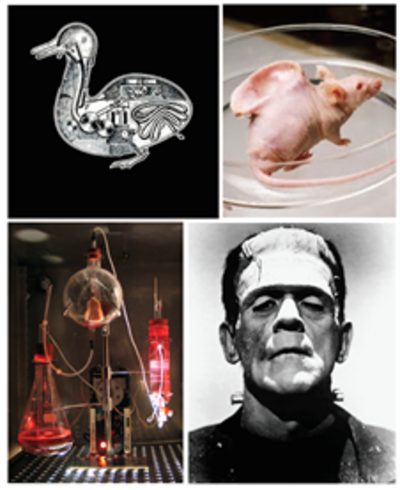Reflecting on Life Through Science, Literature, and Art
On Tuesday, 10 June 2025, the Aarhus University Network for Artificial Biology (AUNAB) hosted its first interdisciplinary workshop under the theme "Historical Perspectives on Engineering Life in Science, Literature, and Art."

Held at the Aarhus Institute of Advanced Studies (AIAS), the event brought together researchers from across disciplines to explore how our understanding of life—and our efforts to engineer it—have evolved and been reflected in culture over time.
Postdoc Christoffer Basse Eriksen opened the workshop by guiding the audience through 17th- and 18th-century concepts of life. Drawing from historical texts and intellectual shifts of the time, he showed how the Scientific Revolution fostered a mechanistic view of nature—one where the human body could be understood as clockwork or a pump.
Associate Professor Kristian Hvidtfelt Nielsen then traced the roots of life engineering back to early agriculture and domestication. He examined how practices such as seed selection and animal breeding laid the foundation for modern genetics, highlighting milestones from Darwin’s pigeon experiments to the Green Revolution.
Professor Mads Rosendahl Thomsen explored how authors like Mary Shelley and Samuel Butler speculated on the boundaries between life and machine, and how their visions might be reframed in today’s age of synthetic biology, AI, and complex systems theory. He challenged the audience to consider how future thinkers might reinterpret these literary pioneers in the year 2100.
Researcher Pernille Leth-Espensen offered a compelling look at the intersection of art and artificial biology, presenting provocative works by The Tissue Culture and Art Project (TC&A), such as Victimless Leather and Disembodied Cuisine. These semi-living art pieces—grown from living cells into objects like a miniature coat or lab-grown frog meat—invite viewers to reflect on the ethics of biotechnology, life beyond the body, and the allure of technoscientific solutions.
The AUNAB Steering Committee thanks all speakers and participants for their contributions to a productive and engaging day of discussions.
